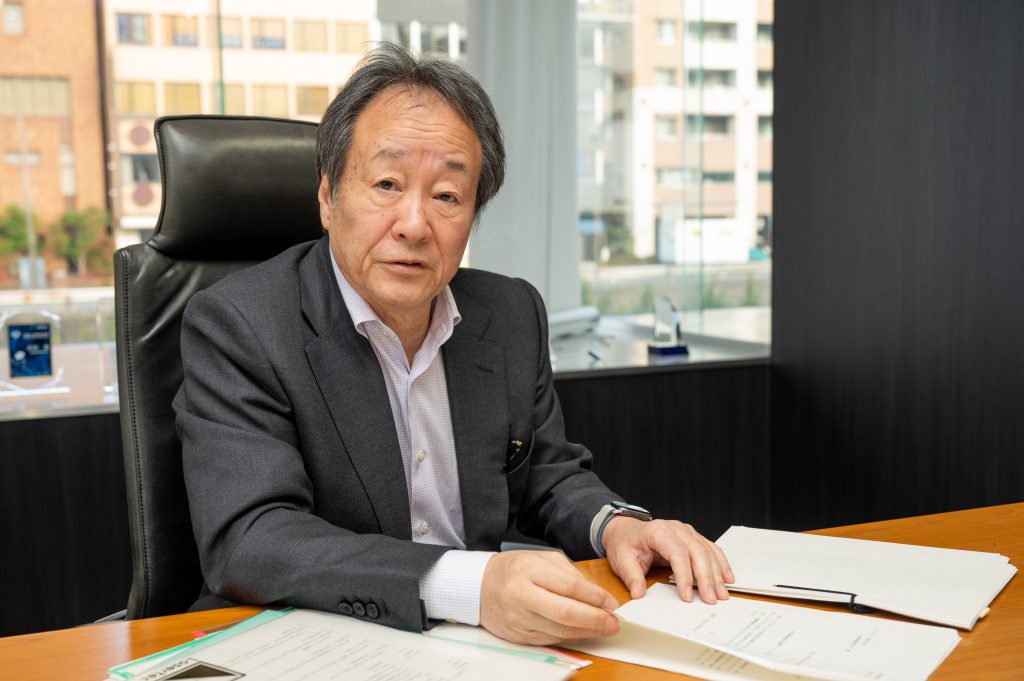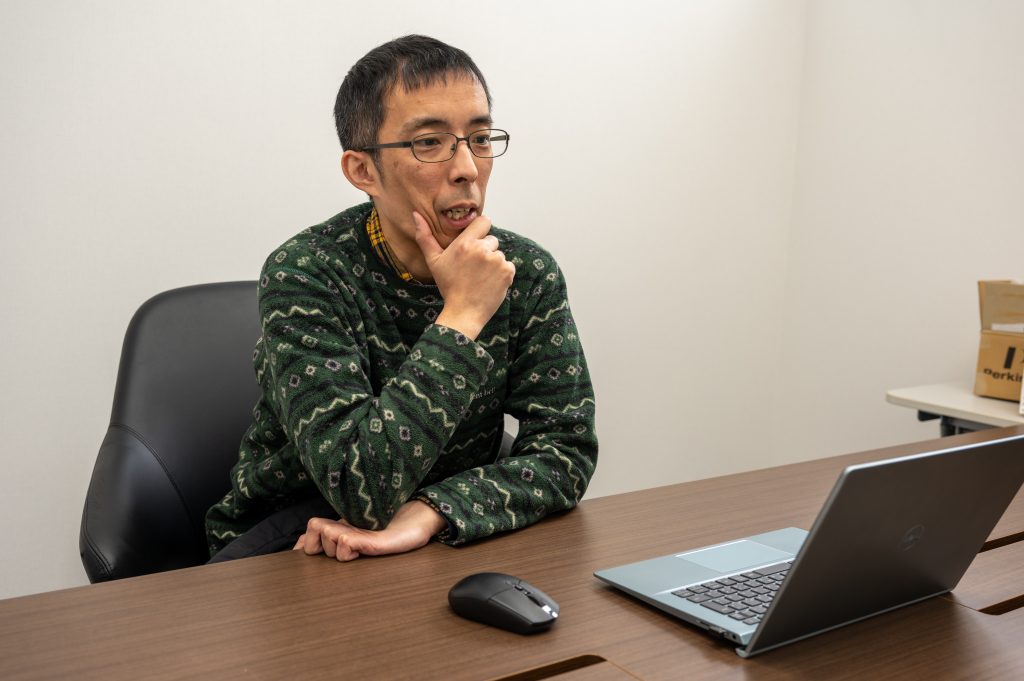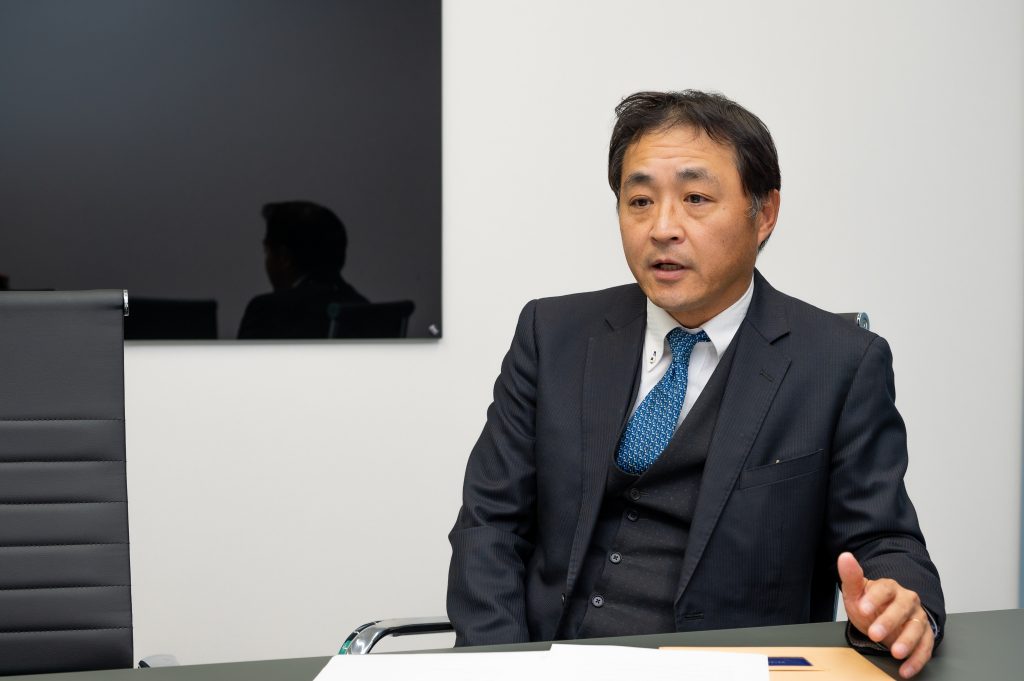Email Magazine
20 years in business (2/3/2023)
Nanophoton was born 20 years ago on February 3, 2003 as an Osaka University start-up. While start-up companies are considered to have a low survival rate, Nanophoton has survived and is looking ahead to the next 20 years.
We interviewed the company’s founder, Satoshi Kawata, Chairman and President, Minoru Kobayashi, Director in charge of Technology, and Kengo Fujiwara, Director and Senior Managing Director, about Nanophoton’s past and future. (Takeshi Nemoto, Editor-in-Chief of the Email magazine/science writer)
Satoshi Kawata Chairman, Representative Director and President

— You were a professor at Osaka University when the company was founded in February 2003. At that time, it had not been very long since the deregulation of dual employment by national university faculty members was eased, and it was rare for a university professor to become a founder and start his own business. In our previous interview, we asked you how your company was founded, but could you tell us again about those days?
Kawata – – -In October 2001, an organization called the Frontier Research Center (FRC) was established at Osaka University, and I became its first Director. The FRC was was started after being selected by the Ministry of Education, Culture, Sports, Science and Technology (MEXT) for its Strategic Research Center Development Program, which called for “systemic reform of the university. At the time, regulations governing dual employment had been eased and “Japanese university professors were encouraged to contribute to society by starting their own companies,” so FRC also encouraged university professors to form their own companies.
I said to various professors, “You must be bored just writing papers. Let’s make it and show it to society and see how it reacts,” . I was interested in it myself, so I decided to form a company.
— But you had a hard time because there was no precedent.
Kawata – – -We corresponded with the Ministry of Education and the National Personnel Authority through the university, and we submitted documents 35 times before we were approved. For example, if we wrote, “I will be a director, but I will take little time off from company work”. When I wrote, “I will do it on an off-hours basis,” the response was, “If you don’t take time off, then you don’t have to be a director”. It took me six months to finally establish the company.
When I founded the company, one of the professor in the economics department told me, “Don’t think about selling machines. It is better to make a machine and use it to make and measure things that various people want”. I did not want to do that.
We did not want to make a big profit, but rather we wanted to make sure that if we put our product out into the world, would people be willing to pay for it and buy it? It is the spirit of engineers that says, “We want people to buy our machines”.
– – – Who were the first members?
Kawata – – – We started with a total of three directors, including myself. The president was a former development manager of a laser microscope manufacturer. The other director was a graduate student of Osaka University’s Graduate School of Economics who was interested in start-ups.
– – – At that time, the Ministry of Economy, Trade and Industry (METI) launched the “Plan for 1,000 University-Launched Ventures” and the goal was achieved at the end of fiscal 2004. Many companies were established during the same period.
Kawata – – – Yes, it is. But there are not many of them left today. I think we survived in large part because we did not receive investment at the time of our founding. When you receive investment, you have to exit, so you have to push too hard. I think we survived because we were stingy.
I also think that the reason we have survived for 20 years is because I feel that we are not reaching what we think we are reaching, and that we are not serving a wide range of customers. Twenty years have passed, but I am still not satisfied. In particular, we have not been able to offer our products overseas. Expanding our overseas market is the next direction for Nanophoton.
– – – Looking back over the past 20 years, how do you feel?
Kawata – – – It all happened so fast. In the beginning, I was not only a professor at the Graduate School of Engineering, but also at the Graduate School of Information Sciences and the Graduate School of Frontier Biosciences, as well as a senior scientist at RIKEN and the director of the Frontier Research Center. I was crazy busy. But I was not so stressed about the company. I think I relied on everyone to leave things to me.
Even though I’m busy, I read more books and go to the movies than most people. Maybe it was necessary for me to change my mind. Perhaps my work at Nanophoton was also a kind of change of pace, since it was very different from my job as a university professor.
Minoru Kobayashi, Director in charge of Technology

– – – You have been involved in nanophoton product development for many years. When did you join the company?
Kobayashi – – – April 2006. I was originally a student in Chairman Kawata’s lab, so I was close to Nanophoton. When I joined the company, there were two employees including myself. It was just the time when we were trying to complete Raman microscope as a product.
Although I had made experimental devices in the laboratory, I had no experience in making products, of course, and everything was new to me. The president of the company at the time had the know-how to make measuring instruments, so I absorbed that know-how as I went along and gave it shape.
– – – It’s very different from the nanophotons we have today.
Kobayashi – – – Yes, we did. In the beginning, we started out by making each unit by hand, and I think it was more like a craft than a product. Because we made to order, we had to think about how to adjust each device according to the customer’s needs. With a structure being made for the first time, unexpected things would happen. Each time this happened, we responded by changing parts, etc.
Now we are making them with a set of manufacturing processes and standards. Compared to the beginning, we are now able to make them in a normal way that is more like an industrial product. After all, there was a limit to the situation where a person with a doctorate assembled each device one by one. As the number of units manufactured increased, we had to bring it to a state where anyone could make them.
– – – Wasn’t it difficult to move from a craft-like method of production to a more industrial-like manufacturing process?
Kobayashi – – – It was a difficult process. Before the transition, all the know-how is in the head of the person in charge. For example, when adjusting the laser to hit a certain position, it is easy to write “hit in the middle. However, it is the person in charge who has a sense of how well the laser should hit the center of the target area to ensure that the product will perform as a final product. Thus, it was very difficult to document because all of the know-how was orally handed down.
It took us longer than expected to painstakingly organize the large amount of know-how and put it into a form that would allow us to outsource manufacturing.
– – – How do you feel about Nanophoton’s history?
Kobayashi – – – We are a lucky company. One unexpected thing after another happened, but we got through it. Of course, this is because we all worked hard in one direction, but I also think that if we had been unlucky, we would not have continued.
The timing was good to begin with: CCD detectors were becoming commonplace, and filters for separating Raman scattered light from laser light were much more powerful. High-intensity solid-state lasers were also readily available. The necessary technical elements were just right.
Speaking of unexpected things, the Lehman Shock and the Great East Japan Earthquake also had an impact. I think that when a prediction is made that the economy is about to go into recession, investment in analyzers is the first thing to be halted. Sales suddenly stop. The Coronavirus was also affected by the timing of Nanophoton’s expansion into overseas markets.
– – – Where are nanophotons headed in the future?
Kobayashi – – – For the past three years or so, our main work has been to set up a system so that we can manufacture the product as an industrial product. So rather than moving forward, we have been putting our feet on the ground. Now that we have a firm foothold, we will focus on moving forward. We want to sell our products all over the world.
What we are also originally aiming for is to make visible with new technology what was not visible with conventional methods. There are many principles in science that have not been fully applied. I would like to use these to create completely new devices.
Kengo Fujiwara, Executive Director

– – – Nanophoton is celebrating its 20th anniversary and is moving on to the next phase, Nanophoton 2.0. What is this Nanophoton 2.0?
Fujiwara – – – Nanophoton 2.0 is also referred to as our “second founding.” In Nanophoton 1.0, we focused on measurement, analysis, and diagnosis as a specialized Raman microscope manufacturer. With “Nanophoton 2.0,” we will change the conventional way of thinking and create a new market while making full use of cutting-edge technology. I can’t tell you exactly how we are going to change our way of thinking, but I hope you will look forward to it.
Also, 1.0 and 2.0 have different production methods. Since our founding, we have manufactured analytical instruments on a build-to-order basis. In other words, we individually decided on specifications in response to customers’ requests and manufactured one unit at a time.
However, about two years ago, the company changed to outsourced manufacturing and established a mass production system. These changes were necessary in order for the company to grow into an “adult” company.
– – – The mass production system is aimed at ……
Fujiwara – – – This is a full-scale overseas expansion. Japan accounts for only 10% of the global Raman microscope market. 90% of the market is overseas. We have already established a subsidiary in Korea to cover Korea and some Southeast Asia. We intend to further expand into the U.S., Europe, and China.
In order to sell overseas, we must build not only a production system but also an after-sales service system, and this is what we will focus on in 2023.
Also, although our equipment is currently mostly used in the field of research and development, we would like it to be widely used in the field of quality control as well. This is true both in Japan and around the world.
– – – So Nanophoton’s mission is to solve problems at R&D and quality control sites around the world.
Fujiwara – – – Not only that, with Nanophoton 2.0 we will be able to use our state-of-the-art equipment in an even wider range of fields. We hope you will look forward to it.